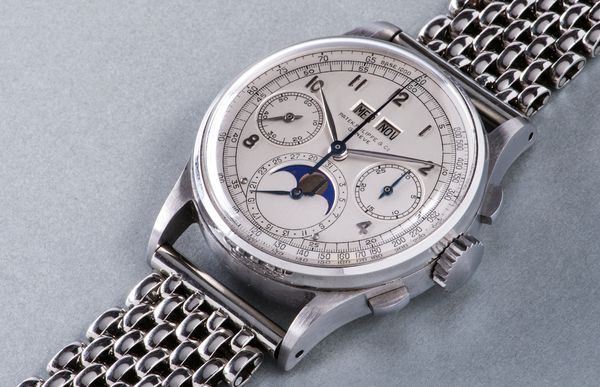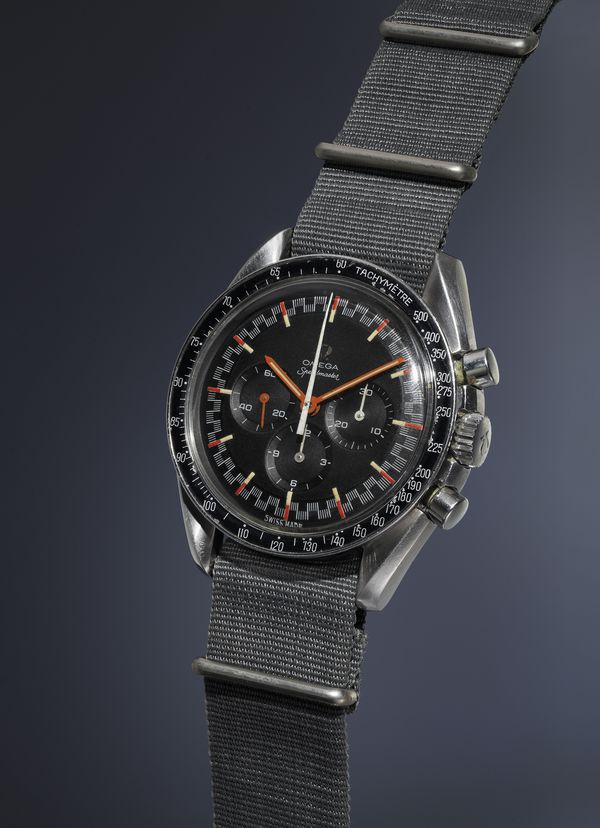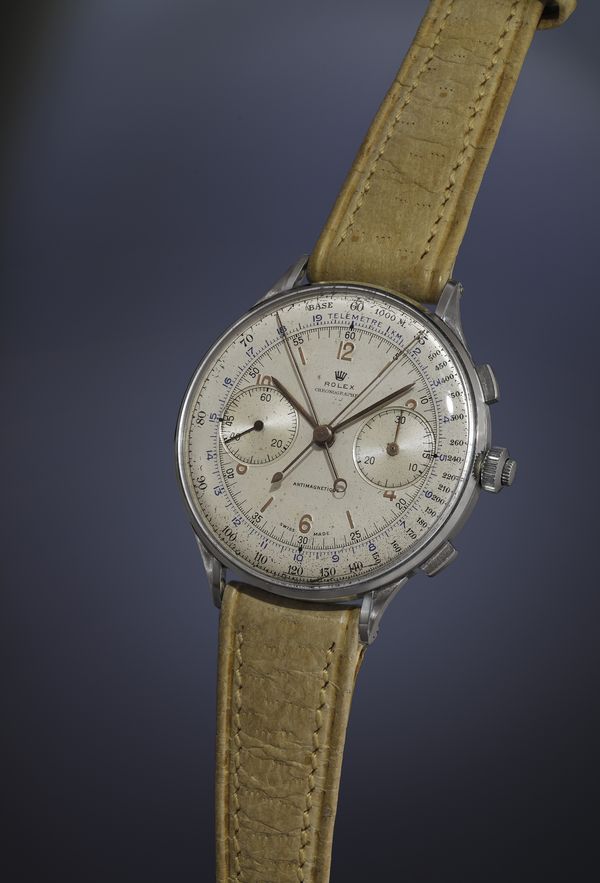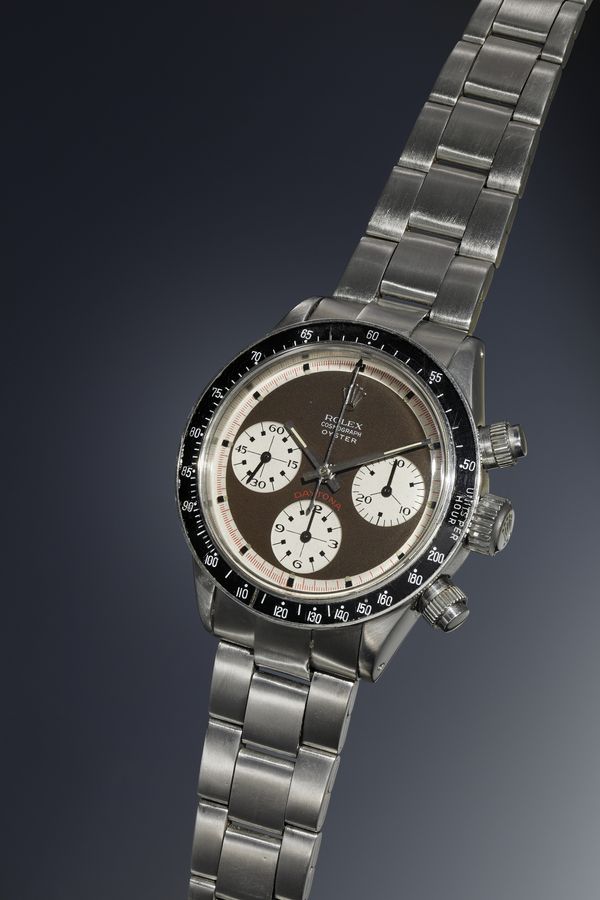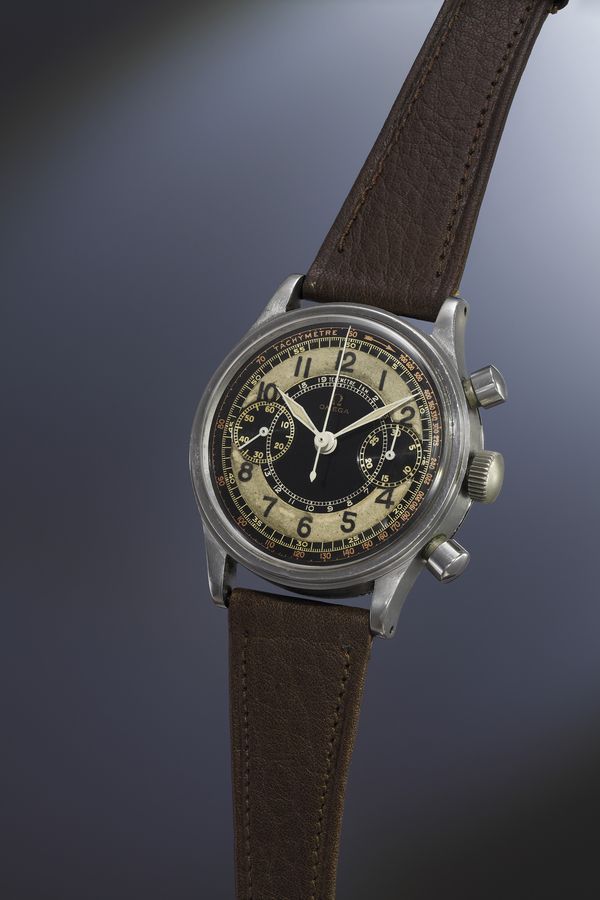Patek Philippe reference 1463 "Tasti Tondi" in stainless steel, retailed by Freccero. Lot 17 from START-STOP-RESET: 88 Epic Stainless Steel Chronographs – sold for CHF605,000. Photography by Pucci Papaleo Editore’s Fabio Santinelli.
From text messages to software applications, we live in an era with the world is at our fingertips. For some it is in their pockets, and for others it's even on their wrists. There's no way to stop change — change is the foundation of evolution — but it is possible to pause, relish in time and admire the moments in which we live.
Sundials were early attempts to tell time by tracking light from the sky; clocks made time available for a community; and watches were the ultimate evolution that made time more personal. Then, 200 years ago, the chronograph was born — invented by watchmakers who took what was considered standard and twisted it to better fit their lives.
The etymology of the word "chronograph" stems from "chronos" (time) and "graph" (to write)
The mythical Patek Philippe reference 1518 in stainless steel, one of the world's most legendary collector's wristwatches. Lot 38 from Geneva Watch Auction: FOUR – sold for CHF11,002,000 – shattering the record for the most expensive wristwatch ever sold at auction.
From Greek origins, the etymology of the word "chronograph" stems from "chronos" (time) and "graph" (to write). The French watchmaker and painter, Louis Moinet, invented the chronograph in 1816; now, two centuries later in 2017, it is still a highly sought-after and commonly-used complication in the world of watchmaking given its ability to measure intervals of time in fractions of seconds, minutes and/or hours.
Since its inception, the chronograph has evolved into a highly useful tool for military personnel, pilots, doctors or those with a passion for games and gambling. Based on the dial configuration, the chronograph allows one to calculate a unit of measurement, such as miles-per-hour. Some of the more commonly used scales found on the dials or bezels of chronographs include a tachymeter, telemeter and/or a pulsometer scale.
Omega Speedmaster reference 145.012-67 SP in stainless steel with black "Racing Dial." Lot 40 from START-STOP-RESET: 88 Epic Stainless Steel Chronographs – sold for CHF72,500. Photography by Pucci Papaleo Editore’s Fabio Santinelli.
During the days of Charles Lindbergh and Philip van Horn Weems, it became crucial for pilots to rely on their wristwatches as navigational tools during flight. In the 1930s and 1940s, pilot's chronographs were often oversized with large luminous hour markers that allowed pilots to easily tell time without distraction. One can assume their large crowns and pushers were designed to allow pilots to wind and activate the chronograph with great ease while wearing gloves.
For racecar drivers, the chronograph was a vital tool for their success. Through the integrated tachymeter scale, whether found on the bezel or the dial, the chronograph remains essential for measuring individual lap and average speed calculated in miles-per=hour.
The Rolex reference 4113 split-seconds chronograph in stainless steel. Lot 56 from START-STOP-RESET: 88 Epic Stainless Steel Chronographs – sold for CHF2,405,000 – beating the world record for the highest price paid for a watch made by the world-famous "crowned" firm, previously set in the same evening by the "Oyster Sotto", Lot 31. Photography by Pucci Papaleo Editore’s Fabio Santinelli.
Once again from the Greek "têle", meaning far, and "metron", meaning measure, the telemeter scale was used most commonly in wartime to estimate the distance of a bomb or storm. The telemeter unites our sense of sight and hearing for its function. The chronograph is actuated upon seeing the light of an explosion or a lightning strike, and is stopped upon hearing the bomb or thunder. The chronograph's seconds hand will point to the exact distance indicated on the telemeter scale, measured in miles or kilometers.
Finally, the most prestigious and third most commonly seen chronograph scale is known as the pulsometer. Used by doctors and nurses alike, the pulsometer allows the accurate calculation of a pulse rate. Calibrated for either 15 or 30 pulsations, the doctor would start the chronograph and, after counting either 15 or 30 heartbeats, the number of pulsations is instantly indicated by the chronograph's seconds hand once stopped.
Chronographs are amongst the most engaging of all watch complications. A highly useful tool for both professionals and everyday life, like no other watch, they offer the ability to literally stop time, allowing the measurement and recording of life's important moments. Vintage chronograph watches, due to their larger, more complex movements, are typically much larger than time-only watches of their eras, making them perfect for today's tastes.
Rolex reference 6263 Cosmograph Daytona "Paul Newman Oyster Sotto" with 'tropical' dial. Lot 31 from START-STOP-RESET: 88 Epic Stainless Steel Chronographs – sold for CHF1,985,000. Photography by Pucci Papaleo Editore’s Fabio Santinelli.
By pressing their pushers to start, stop and reset the chronograph function, collectors are able to interact often with their watch. They become captivated by the ticking of their sweeping chronograph hand, the advancing of their minute counter, and their immediate return to zero upon pressing the reset pusher.
The chronograph was crafted to celebrate the idea that time is out of our hands, something that we cannot change, but through it, we can reserve the right to stop, pause and reflect on the time we are given.
Omega reference CK 2077 in stainless steel with glossy black dial and extremely rare luminous hour marker track. Lot 7 from START-STOP-RESET: 88 Epic Stainless Steel Chronographs – sold for CHF70,000.
Are we able to get a second chance in life; can we put the world on hold? While these are questions that no one can truly answer, watchmakers dedicate their lives to creating objects that bring control to that which is the most intangible aspect of our lives. Quantifying time, and making it real to the touch, the chronograph is the perfect specimen to exemplify time — the common, eternal thread amongst all human beings.
Leigh Zagoory is Associate Specialist, Cataloguer for the New York Watches department at Phillips. Contact her at +1 212 940 1285 to learn more about consigning to one of our sales in Geneva or Hong Kong.

